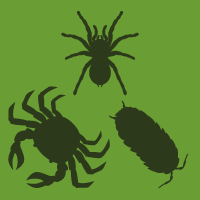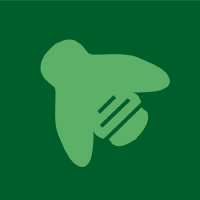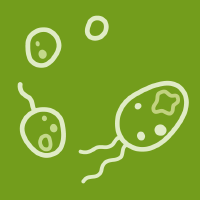Topic Editors




Arthropod Biodiversity: Ecological and Functional Aspects, 2nd Edition
Topic Information
Dear Colleagues,
Arthropods, i.e. invertebrate animals with a segmented body, exoskeleton, and articulated appendages, represent the largest phylum in the animal kingdom, and account for over 80% of all known living species. They exhibit great biodiversity with a wide range of adaptations and forms such as insects, lobsters, crabs, spiders, scorpions, mites, centipedes, and millipedes that live in every habitat on earth. Arthropods play an extremely important role in maintaining ecosystem services, including benefits to humans. For example, many species pollinate plants, produce useful substances, serve as pest control, and serve as food for other animals in most trophic webs. Moreover, mites, isopods, myriapods, and insects are scavengers or decomposers that break down dead plants and animal material, converting them into soil nutrients, or are valued bioindicators of environmental pollution. Many crustacean species (crabs, lobsters, shrimps, and crayfish) are largely consumed by humans, while several insect species are used as protein supply for animal feed or as sources of bioactive compounds, and are therefore farmed on an intensive commercial scale. In contrast, other crustaceans and insects are highly invasive species and represent one of the greatest threats to biodiversity worldwide, requiring strict control strategies. Others are direct pests of crops and stored products, hematophagous vectors, or intermediate hosts of pathogenic organisms. The 2nd edition of this interdisciplinary Topic provides a platform to highlight new research findings, by further advancing the frontiers of knowledge in morphological and functional adaptations and ecology, diversity, and conservation of arthropods.
Dr. Paolo Solari
Prof. Dr. Roberto M. Crnjar
Dr. Anita Giglio
Prof. Dr. Gianluca Tettamanti
Topic Editors
Keywords
- arthropods
- morphology
- genetic and morphofunctional aspects
- ecological aspects
- economic evaluation
- evolutionary aspects
- biodiversity
- risk assessment
- diversity threats
- ecosystem services
- urban biodiversity
Participating Journals
| Journal Name | Impact Factor | CiteScore | Launched Year | First Decision (median) | APC | |
|---|---|---|---|---|---|---|

Animals
|
2.7 | 5.2 | 2011 | 17.7 Days | CHF 2400 | Submit |

Arthropoda
|
- | - | 2023 | 24.7 Days | CHF 1000 | Submit |

Diversity
|
2.1 | 4.0 | 2009 | 17.1 Days | CHF 2100 | Submit |

Insects
|
2.9 | 5.6 | 2010 | 18.1 Days | CHF 2600 | Submit |

Life
|
3.4 | 6.0 | 2011 | 19.3 Days | CHF 2600 | Submit |

Pathogens
|
3.3 | 6.8 | 2012 | 13.5 Days | CHF 2200 | Submit |

Preprints.org is a multidisciplinary platform offering a preprint service designed to facilitate the early sharing of your research. It supports and empowers your research journey from the very beginning.
MDPI Topics is collaborating with Preprints.org and has established a direct connection between MDPI journals and the platform. Authors are encouraged to take advantage of this opportunity by posting their preprints at Preprints.org prior to publication:
- Share your research immediately: disseminate your ideas prior to publication and establish priority for your work.
- Safeguard your intellectual contribution: Protect your ideas with a time-stamped preprint that serves as proof of your research timeline.
- Boost visibility and impact: Increase the reach and influence of your research by making it accessible to a global audience.
- Gain early feedback: Receive valuable input and insights from peers before submitting to a journal.
- Ensure broad indexing: Web of Science (Preprint Citation Index), Google Scholar, Crossref, SHARE, PrePubMed, Scilit and Europe PMC.

